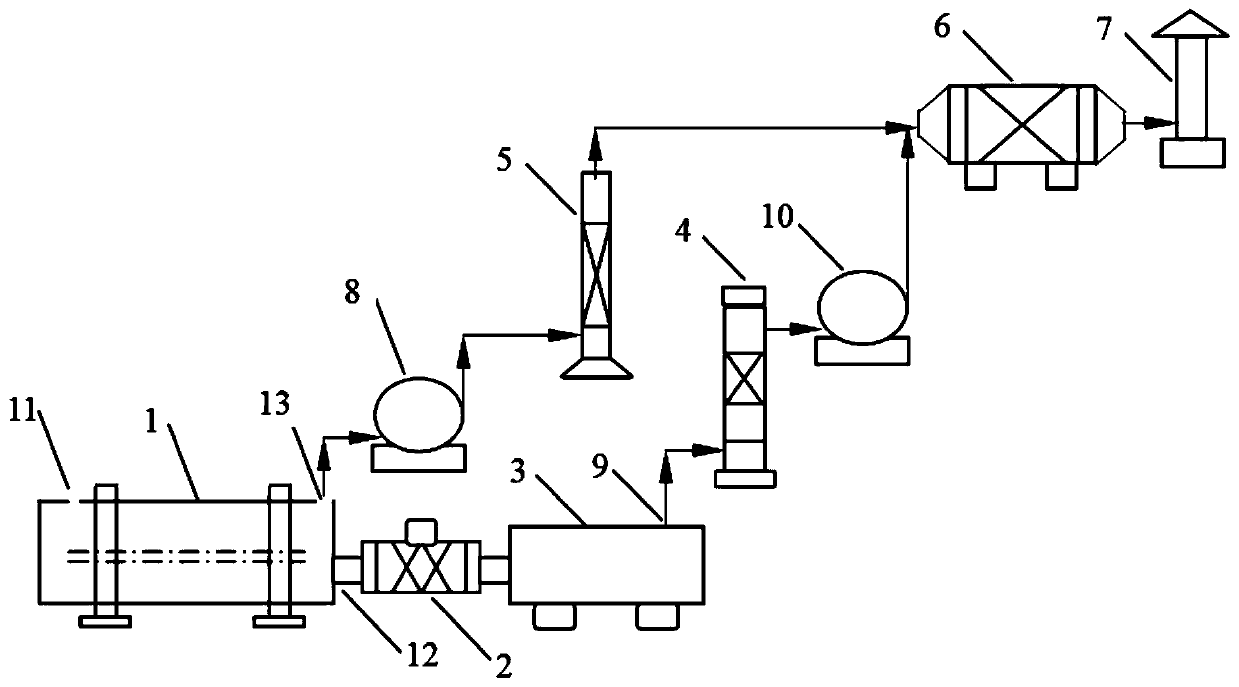Pyrolysis treatment system for removing organics in chemical abraum salt
A treatment system and organic matter technology, applied in the direction of incinerators, lighting and heating equipment, combustion methods, etc., can solve the problems of waste of resources, affecting the quality of salt, and very high requirements for corrosion resistance of equipment, and achieve the effect of avoiding regeneration
- Summary
- Abstract
- Description
- Claims
- Application Information
AI Technical Summary
Problems solved by technology
Method used
Image
Examples
Embodiment Construction
[0022] The present invention will be further described below in conjunction with specific examples.
[0023] Such as figure 1 As shown, a pyrolysis treatment system for removing organic matter in chemical waste salt includes a primary pyrolysis device 1, a screw feeder 2, a secondary pyrolysis device 3, a quench tower 4, a spray tower 5, Organic waste gas purification device 6 and exhaust tube 7; primary pyrolysis device 1 is provided with feeding port 11, discharge port 12 and gas discharge port 13, waste salt is added through feeding port 11 of primary pyrolysis device 1, and gas is discharged The port 13 is connected to the spray tower 5 through the first induced draft fan 8, and the spray tower 5 is connected to the organic waste gas purification device 6; the discharge port 12 of the primary pyrolysis device 1 is connected to the secondary pyrolysis device through the screw feeder 2 3 phases are connected, and the waste gas produced by the secondary pyrolysis device 3 en...
PUM
 Login to View More
Login to View More Abstract
Description
Claims
Application Information
 Login to View More
Login to View More - R&D
- Intellectual Property
- Life Sciences
- Materials
- Tech Scout
- Unparalleled Data Quality
- Higher Quality Content
- 60% Fewer Hallucinations
Browse by: Latest US Patents, China's latest patents, Technical Efficacy Thesaurus, Application Domain, Technology Topic, Popular Technical Reports.
© 2025 PatSnap. All rights reserved.Legal|Privacy policy|Modern Slavery Act Transparency Statement|Sitemap|About US| Contact US: help@patsnap.com

